Three years after the Fire that Killed 41 Girls in Guatemala
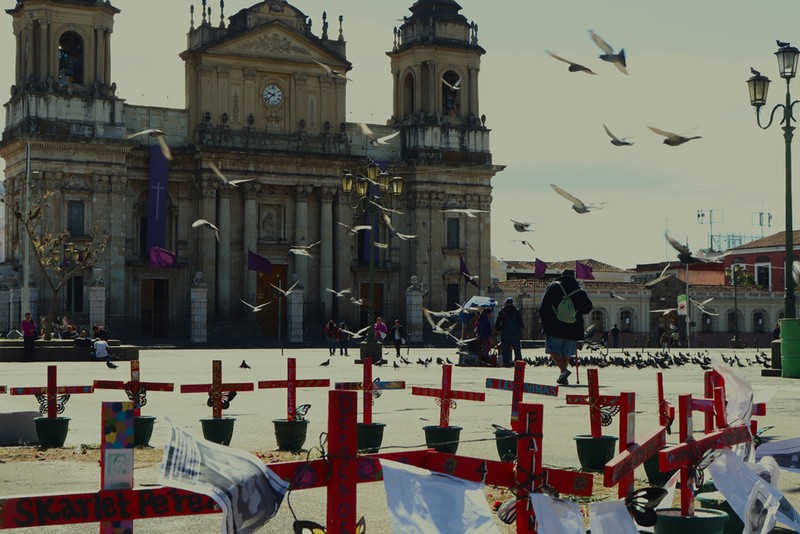
Stigmatization, criminalization and a lack of justice: at the end of 2019, the 15 surviving girls were accused for the deaths of their fellow “safe home” inhabitants.
By Frauke Decoodt* (Confidencial)
HAVANA TIMES – “I don’t want anyone to wish me a Happy Women’s Day on March 8th,” recently said Brendy Cuy Urizar. Elsa Siquín Montafúr doesn’t celebrate this day either. Brendy is the aunt of Yohanna and Elsa the mother of Yemmi; two of the 41 girls who died in the ‘Safe House’ fire in Guatemala on March 8th, 2017.
Three years after the tragedy, this is still considered as being the children’s fault for their protesting the day before – or, they are considered criminals, because “by being there, they must have done something wrong.” Mothers are also to blame because they “abandoned their daughters at the home”.
This criminalization reached its peak when at the end of 2019 the fifteen surviving girls were denounced for being responsible for the death of their fellow home residents. Stigmatization and criminalization do not only determine the search for justice after the tragedy, yet they have also determined the life and death of the girls, as well as how they ended up at the ‘home’.
An announced tragedy
The day before the fire, several young people protested and escaped from the Virgen de Asunción ‘Safe Home’ within the municipality of San José Pinula – on the outskirts of Guatemala City. The Safe Home was not as safe as its name implied, nor was it all that safe according to the law, which establishes its function as a shelter for young people at risk of violence.
Every Sunday and Monday, Yemmi’s mother visited her at the Home. Yemmi cried a lot, wanting to leave. “She complained about the rotten food and abuse. The last Sunday that I saw her, she told me that she didn’t want to drink the soda anymore, because they (the girls), feared that they were being drugged to make them docile, and that she herself saw how they took a girl at night. She gave me a letter on that day, and that’s why they later punished her.”
Yemmi did not exaggerate. Between 2012 and 2016, the Human Rights Prosecutor registered dozens of reports of abuse, including general abuse, rape and sexual trafficking. Brendy, Yohanna’s aunt, understands why the girls protested. “All they were asking for was their rights. They did not enjoy sanitary pads. When they had their periods, they took pieces from the mattresses.”
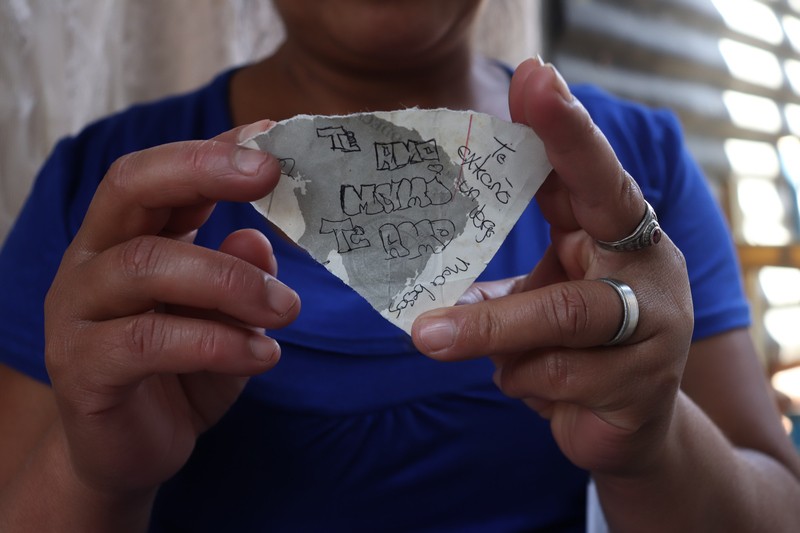
March 7th, was not the first-time young people rebelled against abuse. What was exceptional, was that on this occasion, more than a hundred police officers specially trained to fight criminals arrived to suppress a protest of minors – by the orders of the then President Jimmy Morales. The young girls who were captured, had to wait for hours in the cold outside the Home, beaten and sprayed with pepper gas.
Not wanting to mix “the good ones” with “the bad ones”, they locked the boys in a large auditorium and the 56 girls in a classroom of 47 square meters. The girls were kept there from midnight onwards, without access to the bathroom or drinking water. What they were given – were polyethylene mats. Then, after one day and a night of despair, one of the girls set on of them on fire. A sea of ??flames quickly filled the room.
Deputy Commissioner Lucinda Marroquin was in possession of the key, but did not open the door for nine minutes. Survivors say that she insulted them and yelled that they burn. Twenty-three girls burned to death, followed by 18 more who died over the next few days. Fifteen girls survived, with serious physical and emotional injuries. “Nine minutes,” cries Brendy sitting in the room where the whole family sleeps. “She didn’t even open the door when she heard those terrified screams of the girls that were burning. I will never understand this.”
Survivors reported for murder
Twelve people, including police officers, employees of the Safe Home, a judge and senior officials of the Ministry of Social Welfare, face trials for the events of March 7th and 8th, 2017. They are accused of lesser crimes, such as maltreatment and manslaughter – crimes involving penalties of three to eight years.
The criminal process is barely advancing. “The biggest obstacle is that they divided the investigation and prosecution into three separate cases, according to the capacity of command and decision making of the accused,” explains Esteban Celada, the lawyer for Women Transforming the World; an organization that is defending three families.
The process is also plagued by other delays and obstacles. Only during the last week of January 2020, was a hearing canceled, because one prosecutor was two minutes late, and the other, because they forgot the transport permits for one of the accused.
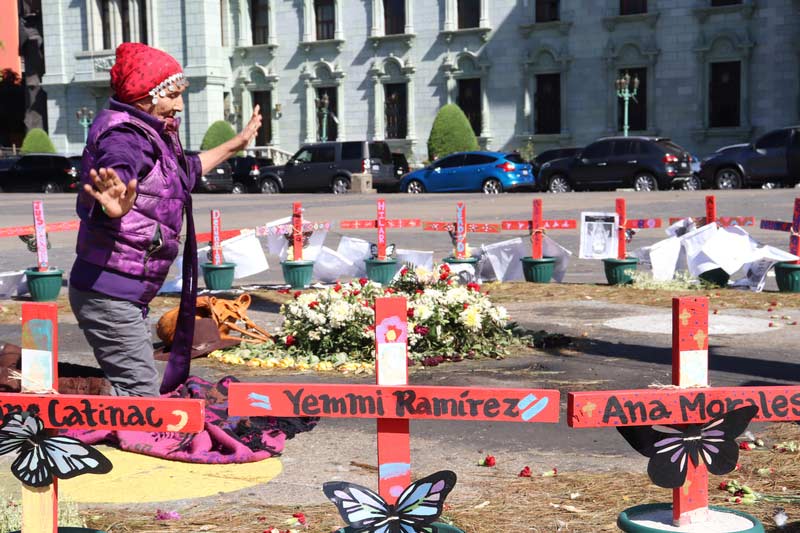
Another strategy of the defense lawyers is to blame the survivors and relatives of the deceased. It is a campaign that is also reflected at the political, media and social level. Celada speaks indignantly. “Instead of conceiving the girls as victims who suffered a lot of violence, they paint them as misbehaved youngsters and criminals who were institutionalized.” They also question families – specifically mothers, hinting that they did not care about their girls and they therefore ended up in state custody. Celada describes this discourse as being very offensive. “But the most perverse of all this criminalization, is criminally denouncing the surviving girls as being responsible.”
In September 2019, a lawyer named Ludwig Sandoval, filed a complaint against the 15 surviving girls, accusing them of 18 crimes as well as murder; a charge that carries a penalty of 25 to 50 years in prison. Sandoval has nothing to do with the case but is connected to the former director of the Safe Home. The complaint was made once the complainant lawyers saw that seven surviving girls could finally give their testimonies. No survivor should repeat their testimony in three separate criminal proceedings.
According to Celada, this complaint seeks not only to stigmatize the girls but also to silence them. She adds that in order to understand this perverse criminalization, the stigmatization and the continued violence against the girls, which have influenced their lives – their arrivals at the home, their deaths and the search for justice – must all be contextualized. “This case is a reflection of Guatemala, a lethal cocktail of misogyny, extreme poverty and domestic, state, institutional and criminal violence.”
Kidnapped by the State
Yemmi was 15 when she died in the fire. She lived all her life in an impoverished neighborhood in Guatemala City. Her house looks like an alley where some bricks and sheets have been mounted. Even with the kitchen lying outside this small space, there is barely enough room for the whole family within the toilet and the two, dirt-floor rooms. In the largest room there are no more than two double beds, where Yemmi slept with her mother, three sisters and a brother. The father died years ago.
The two rooms are full of trophies. Yemmi loved to play soccer. Outside, there are dresses drying everywhere. Elsa washes clothes and sells food for a living. When she finished school, Yemmi and Carlota (her four-year-old sister), helped their mother to prepare and sell tamales. “They never went without, they always had something to eat, even though it was just beans. If she needed a notebook, I worked out how I could buy it. I was always both dad and mom to everyone.”
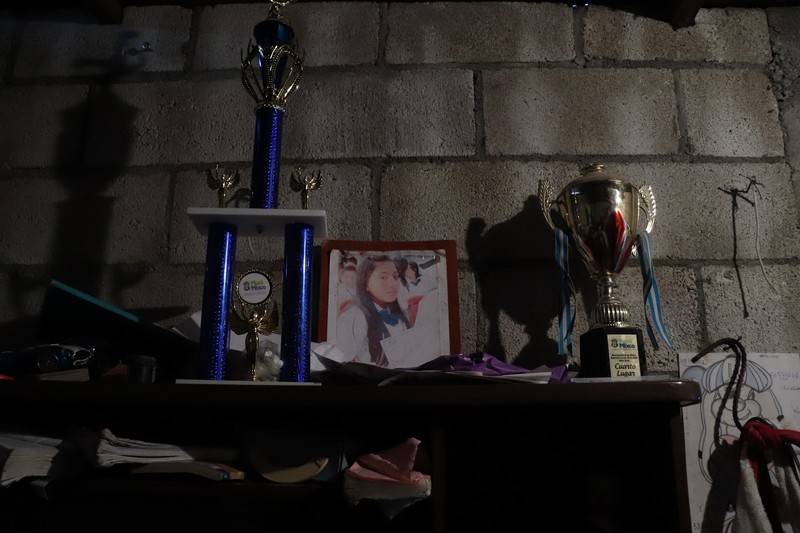
Not only extreme poverty distinguished Yemmi’s life. It was also determined by the violence that plagues Guatemala and the neighborhood where she grew up. The gangs and the violence they generate is a reality that cannot be denied there. Nor can the violence generated by the authorities who stigmatize the poor youth in these neighborhoods as being possible gang members.
Due to the persecution of young men, gangs have changed tactics and contract girls to bring them weapons and drugs. Standing next to a friend who carried a gun, Yemmi was arrested at a police checkpoint. They did not allow her to call her mother. The policeman who took her phone away – never returned it. The judge sent her friend to a juvenile penitentiary, and Yemmi to the Safe Home. They never told Elsa where her daughter was.
The state will have custody
Stef Arreaga, is a Guatemalan journalist and member of the 8 Tijax Collective. After hearing about the fire, he stayed in the hospital and in the morgue for days, since then, she has accompanied most of the families and survivors.
“The common dominator of all 54 girls who were in the fire is the situation of extreme poverty. In addition, most lived in ‘red areas’ – considered as being very dangerous. Another common factor is that several girls came from families with single mothers. The reasons why the girls came to the Home were different, but none were there because they committed crimes. Some were mistreated and even prostituted at home, other mothers put them there because the Maras wanted to take the girls. There were also mothers who wanted their girls to have an education, food and access to a doctor. Something that these mothers couldn’t give them.”
Other girls were like Yohanna who was raised by her aunt Brendy, because her parents left. “At 15, she became rebellious, she wanted to leave.” Brendy explains in her wooden house in a municipality of Sololá. “Yohanna called the court to take her to the home.” Stef wonders if the judges who had to decide on the girls would have made the same decision if they did not come from marginal areas. It is also striking that so many girls came from families where women raised the girls, and the marginalization that this implies.
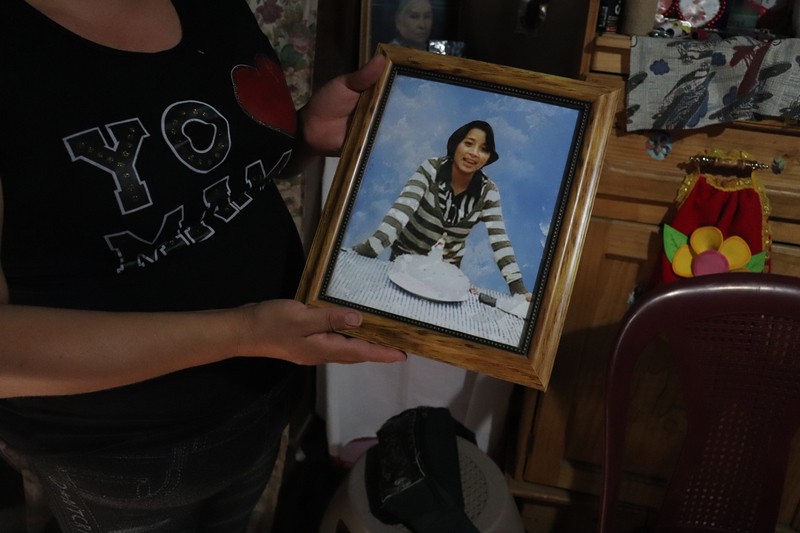
Elsa, who cannot read or write and who almost never left her neighborhood, looked for her daughter in hospitals, morgues, homes and courts, inside and outside Guatemala City. She asked several times about Yemmi within the Children’s Court that had locked her up. After a month she found her in the Safe Home, after a suggestion from a stranger.
“She had stiff hair and her clothes and body were full of marks. They didn’t give her anything to bathe with. She was beaten by other girls and burned in the sun because they put her out on the courts as a punishment. I promised I was going to get her out of there. At the hearing, the judge said that he decides – he was going to have the care. But what care? She was handed to me dead,” weeps Elsa.
“If I had received some money, I would have taken my family out of this neighborhood”
Elsa and Brendy are clear. It was the state that burned them. “But the neighbors and my family tell me that because of me she was there,” laments Elsa. “Even on the way to the morgue, my mother and sister scolded me that Yemmi was my responsibility.” Brendy is also looked at badly outside her village. In the streets of the nearest city they shouted ‘murderer’. “We’re not going there anymore.” Elsa no longer sells her tamales in the same position above the neighborhood for fear of being extorted. Many people think that Elsa, Brendy and the other families, received money for what happened with their daughters, discrediting them by claiming that their motivation for being in the trials is the compensation.
“If I had received some money, I would have taken my family out of this neighborhood,” says Elsa. Recently, she received death threats from neighbors and a year and a half ago they killed her 13-year-old daughter Carolina. She went to a shop next door and never came back, she was beheaded and thrown into a nearby vacant lot. Elsa says she has no idea why. “Maybe because they thought I received money, or maybe because Carolina didn’t want to accompany a person as her sister did. Here in Guatemala, violence is thrust upon girls.”
Three years without justice
Both Elsa and Brendy despair in their search for justice, as the judge suspends one hearing after another. Reaching these hearings costs money and time, something that several families don’t have. “I don’t go to all of them. The day I go is a day I don’t work,” explains Elsa. Brendy is outraged that it’s already three years and there’s still no justice. “We know we are facing very high and powerful officials.”
It took two years to decide whether or not certain figures should face trial, such as the judge who did not fulfill his duty to find out and ensure the safety of children and adolescents on March 7th. Other defendants had close ties with former President Jimmy Morales. He also faces complaints in this case, for ordering the arrival of 100 extra police. His immunity always protected him from persecution in this case. He continues to enjoy immunity, since January 2020 he was appointed as a deputy in the Central American Parliament, hours after the inauguration by the new president.
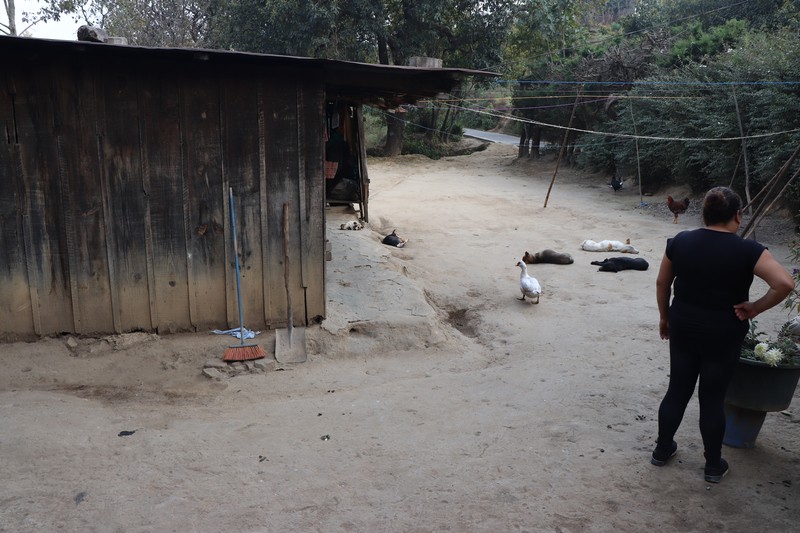
Esteban Celada believes that another reason for increasing the obstruction of justice is because two of the three criminal proceedings are about to enter the final stage. At this stage there will be public hearing and evidence will be presented. Maybe 2020 will see sentences in the case of Hogar. However, Stef Arreaga of the 8 Tijax collective fears that they could be light penalties, since they are not tried for crimes of torture but for crimes such as abuse. Furthermore, penalties for murder are not cumulative; they are judged by the whole group, not by the 56 individuals.
Justice outside of court
For Brendy and Elsa, justice is not a memorial that the Government installed in November 2019 at the entrance of the Home, spelling the names and forgetting to invite families and survivors to the inauguration. Justice for them is that the truth is known about what happened, that the culprits are properly convicted, and that what happened in any other shelter does not happen again, to no other girls.

There is still much to do. “These riot episodes continue to happen in other homes where the youth escape, where the girls are asking to be heard,” reflects lawyer Celada. “The bad thing is that society doesn’t listen. If they continue to rebel, it is because they want to tell us something, but we don’t even think they are worthy of being heard.”
Celada emphasizes that justice should also be sought outside the courts, for example, by maintaining the altar that civil society organizations and individuals mounted within the Central Plaza of Guatemala. In September 2019, the Government removed it. Although activists put it back, the lack of outrage by the general population says a lot according to Celada. It reveals stigmatization and criminalization towards families and survivors. “If a society is unable to empathize with such a serious event as this, violence is normalized. And a tragedy like this one of the Safe Home can happen again.”
*Original text in the author’s blog.





